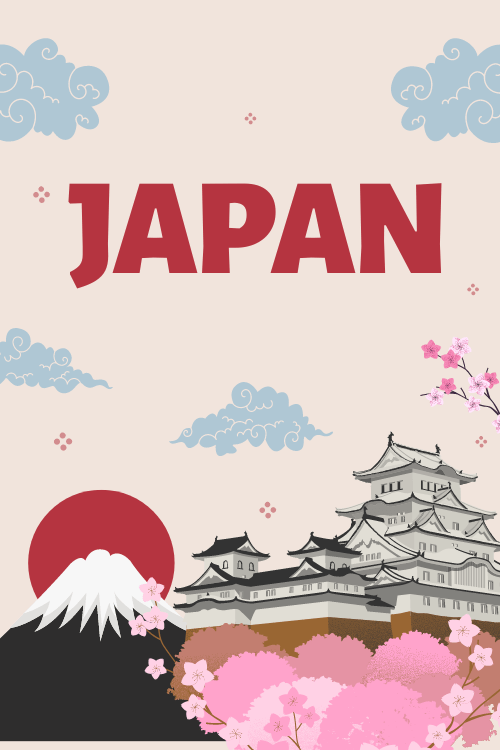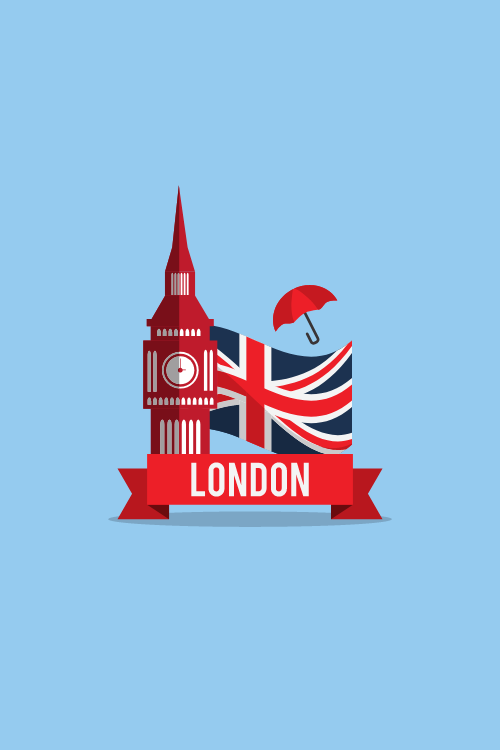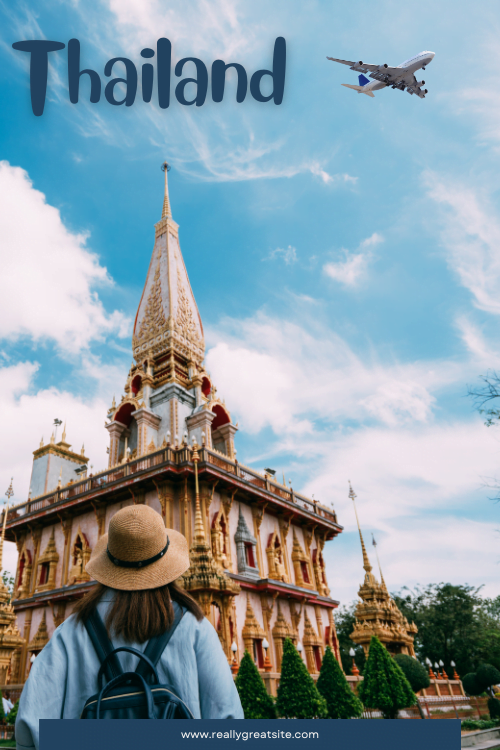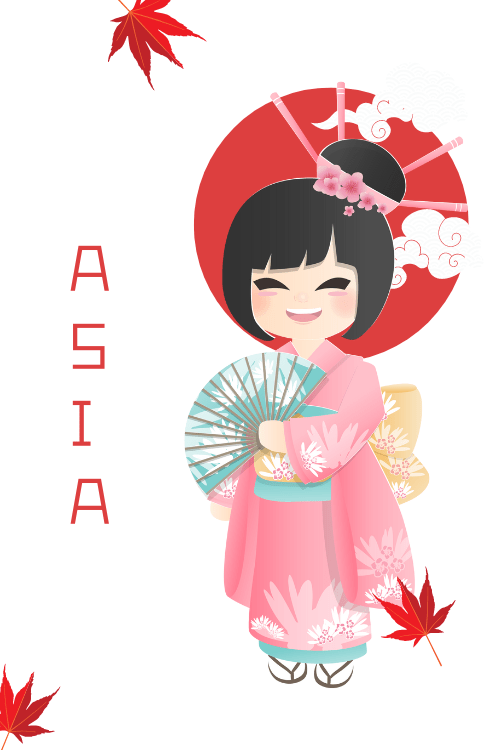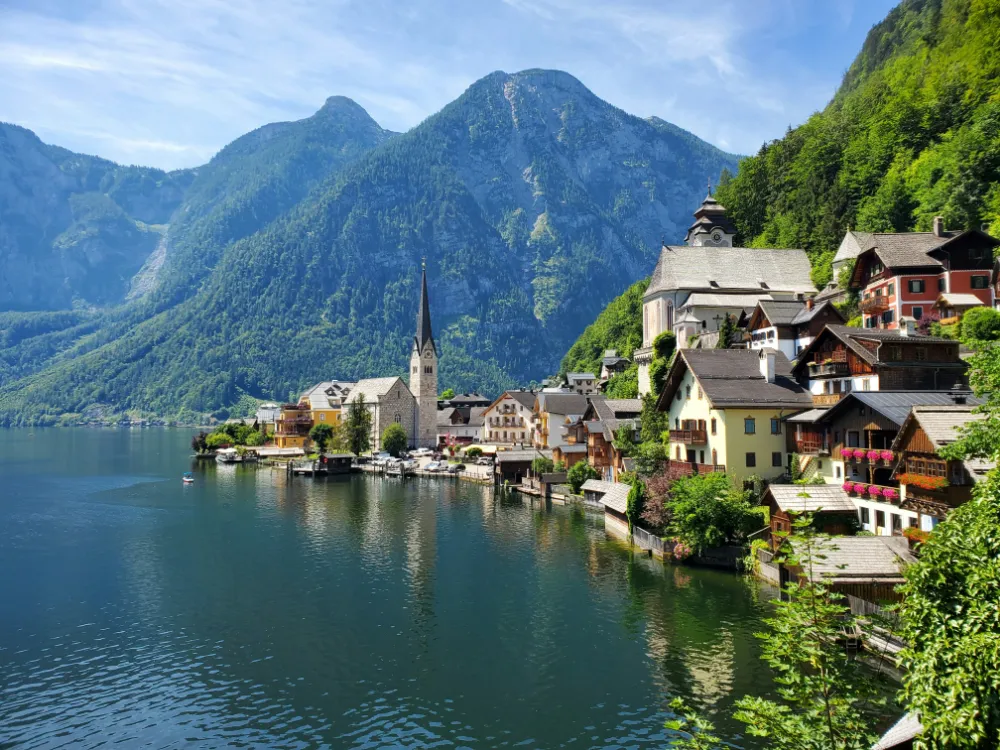eSIM Austria
The Best Time to Visit Austria: A Complete Guide
When is the Best Time to Visit Austria? The Short Answer
Deciding on the best time to visit Austria hinges entirely on the kind of experience sought. This alpine heart of Europe offers distinct charms in every season, from imperial cities glittering under winter snow to sun-drenched valleys bursting with summer life.
For travelers seeking a quick answer, the ideal time can be summarized by activity:
- For City Sightseeing & Culture (Vienna, Salzburg): The shoulder seasons of late Spring (May to early June) and early Autumn (September to October) are unparalleled. These periods provide a sublime balance of pleasant weather for exploring, significantly smaller crowds than in summer, and more reasonable prices for flights and accommodation.
- For Hiking & Alpine Scenery: The summer months from June through September are the prime season for outdoor enthusiasts. July and August boast the warmest weather and guarantee access to high-altitude trails, while June and September offer a quieter, more serene experience on the paths.
- For Skiing & Winter Magic: The official ski season spans from December to March. The ultimate “sweet spot” for avid skiers is mid-January. This window offers excellent, deep snow conditions across most resorts but avoids the peak crowds and prices associated with the Christmas, New Year, and February school holiday periods.
- For Budget Travelers: The shoulder seasons (April-May, September-October) and the off-peak months (November, March) present the best value. However, this is highly dependent on the destination; while Vienna may be affordable in February, Alpine ski resorts will be at their most expensive.
Austria’s Seasons at a Glance
| Season | Overall Vibe | Weather Snapshot | Crowds & Costs | Perfect For… |
| Spring (Mar-May) | Awakening & Renewal | Mild but unpredictable; cool nights, pleasant days by May. | Low to Medium | City breaks, cultural festivals, cycling, seeing the landscapes bloom. |
| Summer (Jun-Aug) | Vibrant & Bustling | Hot in cities, warm and thundery in the Alps; long daylight hours. | High | Hiking, lake swimming, major music festivals, outdoor adventures. |
| Autumn (Sep-Nov) | Golden & Mellow | Pleasant and stable in Sept; cooler and foggier by Nov. | Medium to Low | Hiking, wine tasting, harvest festivals, museum hopping. |
| Winter (Dec-Feb) | Festive & Cozy | Cold, often below freezing, with reliable snow in the mountains. | High (Ski Resorts), Low/High (Cities) | Skiing, Christmas markets, Vienna’s ball season, imperial city charm. |
Austria: Your Perfect Season
A data-driven guide to discovering the ideal time for your Austrian adventure, from Alpine peaks to Viennese streets.
Best Weather
May-Jun & Sep
Best on a Budget
Nov & Mar-Apr
Peak Hiking
Jun-Sep
Prime Skiing
Dec-Mar
A Tale of Three Climates
Austria’s weather isn’t one-size-fits-all. The eastern plains (Vienna) have hotter summers, while the Alps (Salzburg, Innsbruck) are consistently cooler and wetter, especially in summer.
The Vibe of Each Season
Each season in Austria offers a unique blend of activities. Here’s a look at the focus of each period, from cultural pursuits to outdoor adventures.
Spring: Awakening
A perfect mix for city explorers, with cultural life in full swing and landscapes beginning to bloom.
Summer: Vibrant
The season for the great outdoors, dominated by hiking, swimming, and mountain adventures.
Autumn: Golden
A balanced season ideal for hiking in golden landscapes and enjoying the return of the city’s cultural calendar.
Winter: Wonderland
Defined by world-class skiing in the Alps and the magical festive markets in the cities.
When to Go for What You Love
Pinpoint your perfect travel window. This guide ranks the best months for Austria’s most popular activities based on conditions, crowds, and value.
Best Months for Hiking & Outdoors
Best Months for Skiing & Snow
Best Months for Culture & City Trips
(Based on weather, prices, crowds, and performance schedules)

Stay Connected Instantly in Austria
Don’t waste time hunting for local SIMs or risk expensive roaming fees. Get online the moment you land to navigate, book rides, and share your adventure.
Get Your Austria eSIM from eSIM4.comDownload a data plan before you go and activate it on arrival. Simple, fast, and reliable.
Understanding Austria’s Climate: A Tale of Three Regions
A common mistake travelers make is planning for a single, uniform “Austrian climate.” In reality, the country’s diverse topography, stretching from the Danube plains to the high Alps, creates distinct weather zones.
Understanding these regional variations is the first step toward packing correctly and planning a successful itinerary. A trip that combines Vienna and the mountains near Salzburg in the same week requires preparation for two very different weather profiles.
The Eastern Lowlands (Vienna, Danube Valley)
This region, encompassing the capital city of Vienna, is defined by a Pannonian continental climate. This translates to more extreme seasons than the rest of the country: winters are colder, and summers are significantly hotter and drier.
Vienna, for example, receives a moderate 600 mm of precipitation annually, a stark contrast to the drenching the Alps can receive. Summer days in Vienna are often warm and sunny, with temperatures frequently climbing to $30^{\circ}$C ($86^{\circ}$F) or higher, making it ideal for enjoying the city’s parks and street-side cafes long into the evening.
The Alpine West (Salzburg, Innsbruck, Tirol)
The western part of Austria is dominated by the Alps and influenced by both a temperate Atlantic and a classic Alpine climate. This results in milder (though still cold and very snowy) winters and comfortable, yet notably wetter, summers. Cities like Salzburg and Innsbruck experience colder winters and milder summers than Vienna, with a much higher chance of rain.
Summer in Salzburg is characterized by comfortable warmth punctuated by frequent and often heavy afternoon thunderstorms, a phenomenon locals call Schnürlregen (rain in strings).
Here, altitude is the ultimate arbiter of weather. For every 300 meters (985 feet) of elevation gain, the average temperature drops by a significant $5^{\circ}$C ($9^{\circ}$F). This means that while you might be enjoying a pleasant day in the valley, the weather on a nearby mountain peak can be dramatically colder, windier, and can change with breathtaking speed. It’s not uncommon for high-altitude regions to see fresh snowfall even in the middle of summer.
The Southeast (Styria, Carinthia)
South of the main Alpine ridge, regions like Styria and Carinthia enjoy a climate that is often described as almost Mediterranean. Summers here are longer and warmer than in the west, with sheltered valleys and lake districts experiencing particularly sunny and sometimes arid conditions. This makes the region a fantastic, and often overlooked, destination for a warm-weather holiday focused on lakes, vineyards, and outdoor leisure.
A Deep Dive: Visiting Austria by Season
Austria’s identity transforms with the seasons, offering four distinct travel experiences. The country operates on a complex dual-peak system: a summer high season for general tourism and a winter high season for skiing. This means that a month considered “off-peak” in one region could be the busiest and most expensive time of year in another.
Spring in Austria (March – May): The Awakening
Spring is a season of magnificent transition, as the country sheds its winter coat and bursts into life.
- Weather: The season begins with a lingering winter chill. March can still be quite cold, with snow remaining a possibility, especially in the mountains. April is famously unpredictable, a whimsical mix of brilliant sunshine and sudden frosts, so travelers should be prepared for anything. By May, true spring arrives. Daytime temperatures become consistently pleasant, hovering in the $10^{\circ}$C to $20^{\circ}$C (50s to 60s Fahrenheit) range, perfect for sightseeing, though evenings and nights remain cool.
- Crowds & Costs: As a quintessential shoulder season, spring offers excellent value. March and April, in particular, see thinner crowds and attractively lower prices for flights and hotels. Visitor numbers begin to climb in May, but it remains significantly less crowded and more affordable than the summer peak.
- Top Reasons to Visit: Spring is ideal for city exploration, allowing for comfortable strolls through Vienna, Salzburg, and Graz without the oppressive heat or crowds of summer. It’s also a vibrant time for festivals and culture. Colorful Easter markets (Ostermärkte) appear in city squares in March and April, offering traditional crafts and events like egg-painting.
May ushers in major cultural events like the prestigious Wiener Festwochen (Vienna Festival) and the country’s largest culinary event, the Genussfestival Food Fair in Vienna’s Stadtpark. Importantly, the main season for the Vienna State Opera and other classical music institutions is still in full swing.
The countryside awakens with blooming landscapes, making it a beautiful time for cycling along the Danube or enjoying low-altitude walks. A highlight is the spectacular Narzissenfest (Daffodil Festival) in Styria, where giant figures made of daffodils are paraded on floats. - Practical Considerations: Be mindful of the string of public holidays, including Easter Monday, Ascension Day, and Whit Monday. On these days, most shops, banks, and some attractions will be closed, though they often coincide with special local festivities. Packing layers is essential to cope with the variable weather.
Summer in Austria (June – August): The Vibrant Peak
Summer is Austria at its most lively and green, a time of long, sun-drenched days and a packed calendar of events.
- Weather: This is the warmest period of the year. Cities like Vienna can experience heatwaves, with temperatures regularly pushing past $30^{\circ}$C ($86^{\circ}$F). In the Alps, the weather is generally comfortable and ideal for hiking.
However, summer is also the wettest season in the mountains, with frequent, and sometimes severe, afternoon thunderstorms that can bring hail and even high-altitude snow. A major advantage is the extended daylight, with the sun not setting until after 9 PM, allowing for long days of exploration. - Crowds & Costs: This is the undisputed peak season for general tourism across the country. Expect bustling cities, especially tourist magnets like Salzburg, and the highest prices of the year for accommodation—hotel rates in Vienna can easily double. Booking flights, hotels, and key attractions well in advance is not just recommended, it’s essential.
- Top Reasons to Visit: Summer is the season for Alpine adventures. It is unequivocally the best time for hiking, as all trails, including high-altitude treks, are free of snow and fully accessible. All mountain huts (Hütten) that provide food and lodging to hikers are open for business.
The country’s stunning lake districts, such as the Salzkammergut region with towns like Hallstatt and St. Wolfgang, are at their best, perfect for swimming, boating, and watersports.
Summer also hosts Austria’s most famous festivals, including the world-renowned Salzburg Festival (late July to August), Europe’s largest free open-air music festival, Donauinselfest, in Vienna (June), and the spectacular Bregenz Festival, with its floating opera stage on Lake Constance. - Practical Considerations: A critical point for cultural tourists: three of Vienna’s most famous institutions—the State Opera, the Vienna Boys’ Choir, and the Spanish Riding School—take a summer break and do not hold performances in July and August. Packing must account for both heat in the cities and rain gear for the mountains.
Autumn in Austria (September – November): The Golden Season
Autumn is a time of magnificent color and mellow fruitfulness, offering what many consider to be the perfect travel conditions.
- Weather: September often feels like a pleasant continuation of summer but with greater stability and fewer thunderstorms, making it arguably the single best month for hiking. Temperatures remain comfortable, typically in the $10^{\circ}$C to $20^{\circ}$C range (50s-60s Fahrenheit). October brings a noticeable drop in temperature and a steady increase in cloud cover, with mist and fog becoming common in the valleys. November is decidedly chilly and often grey, marking the final transition into winter.
- Crowds & Costs: September and October represent the autumn shoulder season, a fantastic time to visit with fewer crowds and lower costs than the summer crush. November is firmly in the low season for city and countryside tourism, offering the best bargains for those who don’t mind the cold.
- Top Reasons to Visit: The countryside is set ablaze with fall foliage, creating spectacular golden landscapes, especially in vineyard regions. This is the season for the grape harvest and wine-related activities, such as the Vienna Wine Hiking Day, where vineyards open their trails to the public, and visiting the city’s Heurigen (wine taverns).
Autumn is also rich in folk traditions, most notably the Almabtrieb, a celebration in early autumn where cattle, lavishly decorated with flowers and bells, are paraded down from their high-altitude summer pastures. In the cities, there is a cultural reawakening as the main opera and concert seasons resume after their summer hiatus. The “Long Night of the Museums” in October is another cultural highlight, offering access to numerous institutions for the price of a single ticket. - Practical Considerations: Be aware that daylight hours decrease rapidly through October and November, which can impact sightseeing schedules. While cities are quiet in November, it’s the start of the pre-season buzz in high-altitude ski resorts.
Winter in Austria (December – February): The Winter Wonderland
Winter drapes Austria in a magical blanket of snow, transforming it into a cozy, festive, and action-packed destination.
- Weather: Conditions are cold, with temperatures frequently hovering around or dipping below freezing ($0^{\circ}$C / $32^{\circ}$F). Snow is reliable and abundant in the Alps, but even lowland cities like Vienna typically receive a picturesque dusting. January is the coldest month of the year. Days are short and darkness can fall as early as 4:30 PM, lending a cozy atmosphere to the evenings.
- Crowds & Costs: Winter showcases Austria’s dual-season dynamic perfectly. For general city tourism, it is the low season (with the major exception of December). For Alpine regions, it is the absolute peak season.
Cities like Vienna and Salzburg are extremely busy and expensive in December due to the world-famous Christmas markets. Ski resorts are at their most crowded and priciest during the Christmas/New Year period and again in February, which aligns with school holidays across Europe. - Top Reasons to Visit: Austria offers world-class skiing and snowboarding in legendary resorts across the Alps. From late November through December, cities and towns come alive with the magic of Christmas Markets (Christkindlmarkts). Stalls selling mulled wine (Glühwein), gingerbread, and handcrafted gifts fill the squares of Vienna, Salzburg, and Innsbruck.
For a unique cultural immersion, January and February are the height of the glamorous Viennese Ball Season, where hundreds of formal balls are held in the city’s palaces and grand venues. Winter also features fascinating folk traditions, like the Krampuslauf (Krampus Run) in early December, where terrifying half-goat, half-demon figures parade through the streets to scare away evil spirits. - Practical Considerations: Outside of the bustling ski resorts, some tourist attractions and facilities, such as non-glacier cable cars and certain museums, may operate on limited winter schedules or be closed entirely. Winter tires are a legal requirement for driving, and road conditions in the mountains can be challenging.
Austria Month-by-Month: A Traveler’s Almanac
For those planning the finer details of their trip, this granular monthly breakdown combines weather data, events, and activities to help pinpoint the perfect time to travel.
Austria’s Regional Weather – A Monthly Comparison
The following table illustrates the significant climatic differences between Austria’s key regions. Note how Salzburg is consistently wetter than Vienna, and how much colder the Alpine winters are.
| Month | Vienna | Salzburg | Innsbruck (Alps) |
| Avg. High/Low (°C) | Precip. (mm) | Avg. High/Low (°C) | |
| Jan | 3 / -2 | 37 | 3 / -4 |
| Feb | 5 / -1 | 39 | 4 / -4 |
| Mar | 10 / 2 | 46 | 9 / -1 |
| Apr | 15 / 6 | 52 | 14 / 3 |
| May | 21 / 11 | 62 | 18 / 7 |
| Jun | 23 / 14 | 70 | 21 / 10 |
| Jul | 26 / 15 | 68 | 23 / 12 |
| Aug | 25 / 15 | 58 | 22 / 12 |
| Sep | 20 / 12 | 54 | 19 / 9 |
| Oct | 14 / 7 | 40 | 14 / 4 |
| Nov | 8 / 2 | 50 | 7 / 0 |
| Dec | 4 / -1 | 44 | 3 / -4 |
- January: The heart of winter. It’s the coldest month, perfect for skiing in the Alps where conditions are prime. Cities are quiet and affordable after the holiday rush, offering a peaceful time for museum visits. The Vienna Ball Season kicks off.
- February: Ski season hits its second peak with European school holidays making resorts very busy. It’s a great month for families on the slopes. In Vienna, it’s the height of ball season, including the famous Vienna Opera Ball.
- March: A transitional month. The ski season continues, especially at higher altitudes, but with milder weather and fewer crowds it’s great for spring skiing. In the cities, it’s still chilly but the first signs of spring emerge. It’s a quiet, affordable time for city breaks.
- April: Unpredictable weather is the only certainty. It can be sunny and mild one day, cold and frosty the next. Easter markets and celebrations are a major highlight. It’s a good time for city sightseeing before the crowds arrive, and for late-season ski deals.
- May: Spring arrives in full force. Blooming flowers and pleasant temperatures make it ideal for exploring cities and the countryside. The cultural calendar is packed with events like the Vienna Festival and the Genussfestival Food Fair. Hiking season begins at lower elevations.
- June: The start of the summer peak season. The weather is warm and days are long. It’s a fantastic month for hiking, as the mountains are lush and green, often with snow-capped peaks creating a stunning backdrop. Major music festivals like Vienna’s Donauinselfest take place.
- July: Peak summer. Cities can be hot, while the Alps offer comfortable temperatures for hiking. This is the busiest month for tourism. The world-famous Salzburg Festival begins, as do the Bregenz and ImPulsTanz festivals. Expect afternoon thunderstorms in the mountains.
- August: Continues the peak summer season with warm weather and large crowds. It’s the best time for high-altitude trekking as most snow has melted. The Salzburg Festival is in full swing. Many Austrians take their holidays, so lake districts are bustling.
- September: Arguably the best all-around month to visit. The weather is often stable and pleasant, perfect for hiking on quieter trails. The cultural season in Vienna restarts, and the wine harvest begins, with festivals and open vineyards. Crowds and prices drop significantly from summer highs.
- October: The heart of autumn. Early in the month, hiking amidst vibrant fall foliage is spectacular. As the month progresses, it becomes cooler and cloudier, especially in the mornings. Key events include the Viennale film festival and the Long Night of the Museums.
- November: The quietest month of the year for tourism. The weather is cold and can be foggy and grey. It’s the cheapest time for a city break if you don’t mind the chill. Towards the end of the month, the first Christmas markets open and the ski season begins to stir in high-altitude resorts.
- December: A month of festive magic. Cities are bustling and enchanting thanks to the Christmas markets, which are a primary travel driver. In the Alps, the ski season is in full swing. It’s a busy and expensive month across the board, culminating in New Year’s Eve (Silvester) celebrations.
The Best Time to Visit Austria for YOU
To truly find the perfect time for an Austrian vacation, it helps to tailor the season to the specific travel style.
For Hikers & Outdoor Adventurers
The hiking season generally runs from mid-June to mid-September, when mountain huts are open and trails are clear of snow.
- Best for Wildflowers: Visit in June and early July when alpine meadows are a riot of color.
- Best for High-Altitude Treks: Late July and August are ideal, as the summer sun has melted the vast majority of snow on high passes and ridges, ensuring maximum accessibility.
- Best for Quiet Trails & Stable Weather: September is widely considered the ultimate month for hiking. The summer crowds have dissipated, the weather is typically more stable and less prone to thunderstorms than in July and August, and the landscape is painted with the golden hues of autumn larches.
For Skiers & Snow Lovers
Austria’s ski season offers varied experiences from December through April.
- Best for Powder & Peak Conditions: January and February are the coldest months and reliably deliver the best and deepest snowpack across all resorts.
- Best for Avoiding Crowds: The sweet spots are mid-to-late January (after New Year’s and before school holidays), early December (festive but quieter slopes), and late March/early April.
- Best for Budget & Sunshine: For classic “spring skiing,” March and April offer longer, sunnier days, softer snow, lively après-ski scenes, and excellent end-of-season deals on lift passes and accommodation.
For Culture Vultures & City Explorers
The clear winners are the shoulder seasons: April-May and September-October. These months offer pleasant temperatures for walking, far fewer tourists at major sights like Schönbrunn Palace or Hohensalzburg Fortress, and lower prices. Critically, the main cultural season for world-class institutions like the Vienna State Opera runs from September through June, meaning a summer visit in July or August will miss these key performances.
For Budget Travelers
Finding the best value requires targeting the true off-seasons, which differ by region.
- For Cities (Vienna, Salzburg, etc.): The cheapest months are November and March/early April (excluding the Easter holiday period). During these times, demand for hotels and flights is at its lowest.
- For Mountains: This is more nuanced. The most affordable time for a hiking trip is at the very beginning or end of the season (June or September). The cheapest time for a skiing trip is typically in April (excluding Easter) when late-season deals are abundant. Non-skiers should avoid Alpine resorts entirely in winter to escape peak pricing.
For Families
The best time for a family trip depends on the desired activities.
- Summer (July-August): This period aligns with school holidays and offers the widest range of outdoor family activities: swimming in the lakes of Carinthia, exploring family-friendly hiking trails in the Zillertal Valley, riding the alpine coaster in the Zillertal Arena, visiting Vienna’s Prater amusement park, or marveling at natural wonders like the Krimml Waterfalls and the Eisriesenwelt Ice Cave. The trade-off is high costs and crowds, so advance booking is crucial.
- Winter (December): For a truly magical experience, the festive atmosphere of the Christmas markets is unbeatable for families. The lights, sounds, and treats create lasting memories.
- Shoulder Seasons (May-June, September-October): These months can offer a great compromise. The weather is still pleasant for many outdoor activities, but the crowds are thinner and the costs are lower, making for a more relaxed family vacation.
Plan Your Perfect Austrian Trip: Essential Travel Tips
Navigating Public Holidays
Austria observes 13 national public holidays. On these days, expect banks, public offices, and almost all retail stores to be closed. Major museums and tourist attractions in cities usually remain open but may have reduced hours, so it’s vital to check in advance. Transportation runs on a Sunday schedule.
National Public Holidays:
- January 1 (New Year’s Day)
- January 6 (Epiphany)
- Easter Monday (variable date in March/April)
- May 1 (Labour Day)
- Ascension Day (variable date in May/June)
- Whit Monday (variable date in May/June)
- Corpus Christi (variable date in May/June)
- August 15 (Assumption Day)
- October 26 (Austrian National Day)
- November 1 (All Saints’ Day)
- December 8 (Immaculate Conception)
- December 25 (Christmas Day)
- December 26 (St. Stephen’s Day)
Additionally, several regions have their own local holidays where closures will apply, such as St. Rupert’s Day (September 24) in Salzburg.
Austria’s Major Events & Festivals Calendar
Planning a trip around one of Austria’s vibrant festivals can elevate a vacation from great to unforgettable.
| Month | Event Name | Location(s) | Description/Vibe |
| Jan | New Year’s Concert | Vienna | World-famous classical concert by the Vienna Philharmonic. |
| Mozart Week | Salzburg | A week of concerts celebrating Salzburg’s most famous son. | |
| Feb | Vienna Opera Ball | Vienna | The most prestigious and glamorous event of the Vienna Ball Season. |
| Apr | Snowbombing Festival | Mayrhofen | A major music and winter sports festival in the Alps. |
| May | Wiener Festwochen | Vienna | A five-week major cultural festival of theatre, music, and dance. |
| Genussfestival | Vienna | Austria’s largest food and drink fair in the Stadtpark. | |
| Jun | Donauinselfest | Vienna | Europe’s largest free open-air music festival on an island in the Danube. |
| Midsummer Solstice | Wachau Valley | Bonfires and fireworks light up the Danube valley on the longest day. | |
| Jul | Salzburg Festival | Salzburg | One of the world’s most important festivals of opera, music, and drama. |
| Bregenz Festival | Bregenz | Spectacular opera performances on a floating stage on Lake Constance. | |
| Aug | Grafenegg Festival | Grafenegg | Major classical music festival in the open air on castle grounds. |
| Sep | Almabtrieb | Alpine Regions | Traditional cattle drives where decorated cows return from mountain pastures. |
| Vienna Wine Hiking Day | Vienna | Vineyards around the city open for hiking and wine tasting. | |
| Oct | Viennale | Vienna | Austria’s largest international film festival. |
| Nov | Christmas Markets Open | Nationwide | From late November, festive markets appear in cities and towns. |
| Dec | Krampuslauf | Alpine Regions | Parades featuring fearsome Krampus figures to scare away winter spirits. |
What to Pack
Packing for Austria requires careful consideration of both season and region.
- Year-Round Essentials: Comfortable walking shoes are non-negotiable. A compact umbrella and a waterproof jacket are wise additions, as rain can occur in any season.
- Spring/Autumn: Layers are the key to comfort. Pack t-shirts, long-sleeved shirts, sweaters, and a medium-weight jacket (like a fleece or light down jacket).
- Summer: Bring light clothing, such as shorts, t-shirts, and dresses for the cities. However, always include a sweater or fleece for cooler evenings and essential for any mountain excursions. Sunscreen, a hat, and sunglasses are vital. For the Alps, proper rain gear is a must.
- Winter: A warm, waterproof winter coat, thermal underlayers, a hat, gloves, and a scarf are essential. Waterproof, insulated boots with good grip are crucial for navigating snowy or icy streets. For those attending Vienna’s Ball Season, formal wear (a tuxedo or floor-length gown) is required.
Stay Connected in Austria with eSIM4.com
From navigating Vienna’s historic Ringstrasse to checking the latest snow report in St. Anton, staying connected is essential for a modern Austrian adventure. Hunting for unreliable public Wi-Fi or returning home to shocking international roaming bills can add unnecessary stress and cost to a trip.
This is where an eSIM from eSIM4.com becomes your most valuable travel companion. By activating a prepaid data plan on your phone before you even leave home, you land in Austria with instant, high-speed internet access. This empowers you to:
- Navigate with Ease: Use Google Maps or ÖBB’s Scotty app to navigate the excellent train network and city public transport systems in real-time.
- Embrace Spontaneity: Find and book a last-minute ticket for a performance at the Vienna State Opera, reserve a table at a mountain-top restaurant with panoramic views, or check the opening times of a remote castle on the fly.
- Access Information Instantly: Translate a menu at a traditional Heuriger wine tavern, check the detailed weather forecast before embarking on a high-alpine hike, or look up the fascinating history of the Hohensalzburg Fortress while standing within its ancient walls.
- Share Your Journey: Instantly upload photos of a colorful Almabtrieb procession or a video from the breathtaking Grossglockner High Alpine Road without waiting to get back to your hotel.
An eSIM from eSIM4.com offers a seamless, affordable, and stress-free way to stay connected, ensuring your focus remains on the beauty and culture of Austria, not on your mobile data. Choose your Austria eSIM plan today and travel with confidence.
Final Thoughts: Your Austrian Adventure Awaits
Austria is a destination of remarkable depth and variety, offering a compelling reason to visit in every month of the year. It is a country that rewards the prepared traveler.
The key to unlocking the perfect Austrian experience lies not in finding a single “best” week on the calendar, but in aligning your travel dates with your personal interests. Whether the goal is to carve through fresh powder in the Arlberg, witness a world-class opera in Vienna, hike to a wildflower-strewn meadow in the Tyrol, or simply wander through a magical Christmas market with a warm Glühwein in hand, there is an ideal season for it.
By understanding the country’s distinct regional climates and its dual-peaked tourist seasons, any traveler can move beyond generic advice and plan a trip that is perfectly tailored to their dreams. Armed with this knowledge, you are now ready to plan an unforgettable journey to the heart of Europe.
